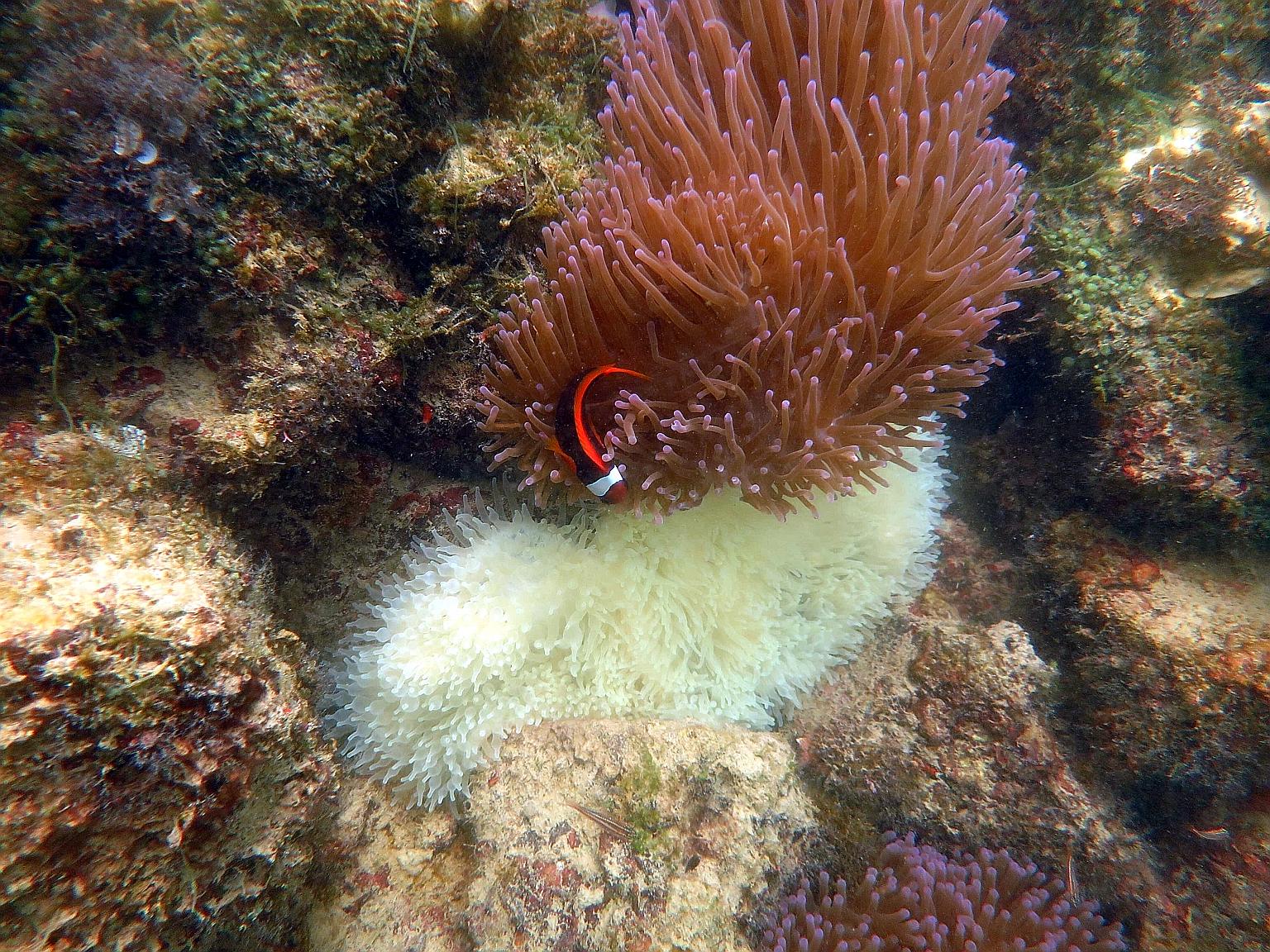Saving corals
Beyond the pale
Warmer seas hurting corals; experts suggest moving them to deeper waters or into controlled environments
Sign up now: Get ST's newsletters delivered to your inbox

Bleaching occurs when abnormally high sea temperatures cause corals and related organisms such as sea anemones to expel the symbiotic micro-algae living in them. Hence, they appear white like the bubble-tip anemone seen here.
PHOTO: NUS TROPICAL MARINE SCIENCE INSTITUTE
Follow topic:
Just as flowers wilt in strong sunlight, soft corals are bleached and appear shrivelled when the water gets too warm.
All is not well in the sea, where temperatures have risen and caused coral bleaching in Singapore and around the world.
Water temperatures have dipped slightly since early this month, and scientists are hopeful that partially bleached corals can recover if the water does not get any hotter.
Bleaching occurs when abnormally high sea temperatures cause corals and related organisms - such as sea anemones - to expel the symbiotic micro-algae living in them.
Corals depend on the symbiotic algae, called zooxanthellae, for food.
"The algae exit the coral, leaving the coral without the zoo- xanthellae's colour and exposing the limestone skeleton which is white, hence 'bleaching'," explained Assistant Professor Huang Danwei, a marine biologist from the National University of Singapore's (NUS) biological sciences department.
Without the algae, the corals derive nutrition by trapping plankton. "But this is not sufficient over the long term, and will result in the weakening of the coral and increase its susceptibility to stress," said coral expert Chou Loke Ming.
A conservative estimate of the temperature threshold at which corals bleach is 31.15 deg C, +/-0.20 deg C, according to the National Parks Board (NParks).
"From end April, temperatures began exceeding the bleaching threshold, reaching up to 0.8 degrees above the threshold some time in May," said Dr Karenne Tun, director of the coastal and marine division at NParks' National Biodiversity Centre.
Temperatures have dipped to just below the bleaching threshold from early this month, and scientists are monitoring the reefs here.
Professor Chou, an adjunct research professor at NUS' Tropical Marine Science Institute, said researchers are not sure yet if the current bleaching episode has peaked.
"But this is certainly a major bleaching event, like in 1998 and 2010. Water temperature is still above normal," he added. The average sea temperature here is 28 deg C, he Chou said.
This year, as in 1998 and 2010, is an El Nino year. This refers to the phenomenon linked to prolonged warmer weather.
Dr Tun said NParks' management strategies include safeguarding local rare species by moving them to deeper water with stronger currents or into controlled environments.
Prof Chou said these measures could help, although the responses are limited in scale. Transplantation is a stressful process for corals and the number of colonies that can be moved is also limited, he said.
Also, when temperatures go back to normal, corals moved to deeper water may suffer from the lack of sunlight at those depths.
Added the marine conservation veteran of 30 years: "A more effective approach is not to wait until warming occurs before responding.
"We should start translocating coral colonies to different and more challenging sites, and give them sufficient time to adapt so that they can tolerate the impact of warming when it next comes."

